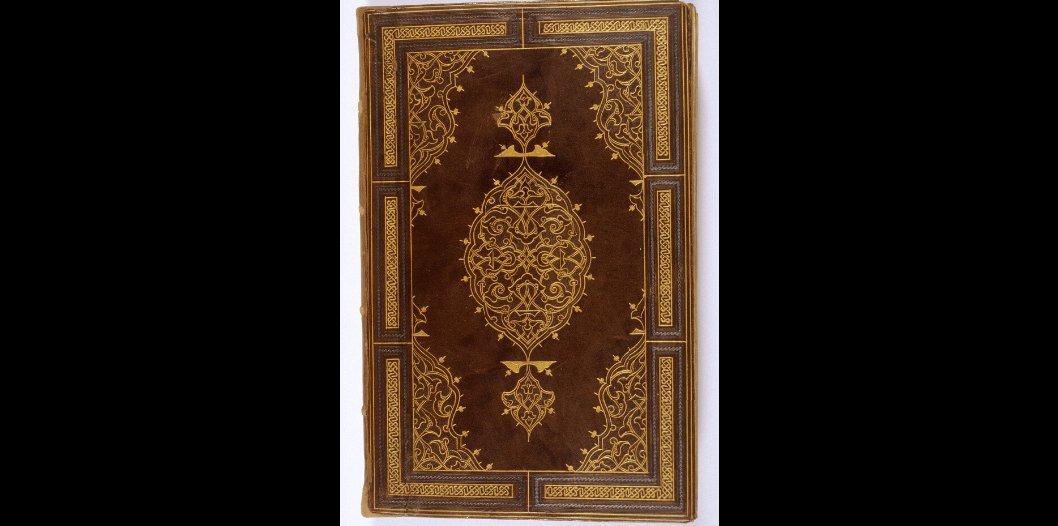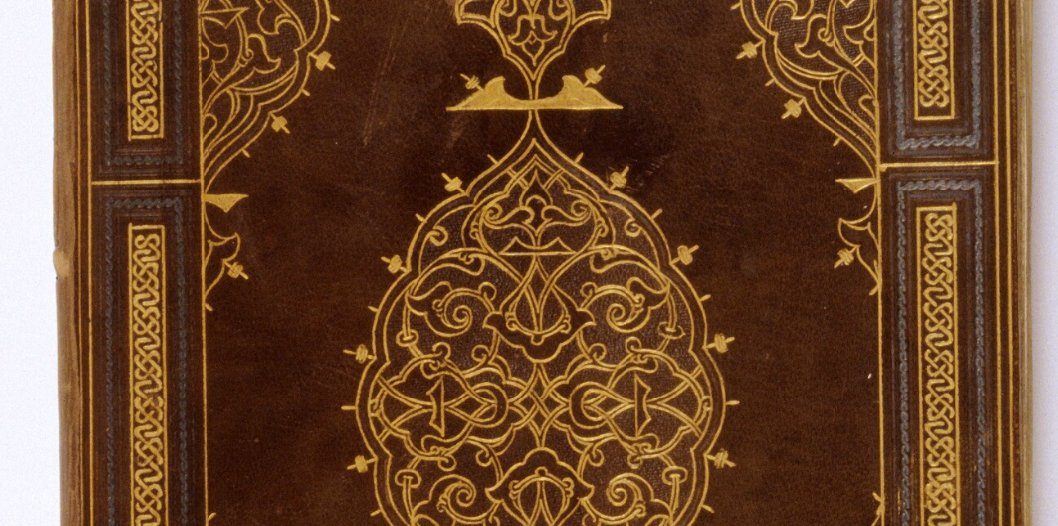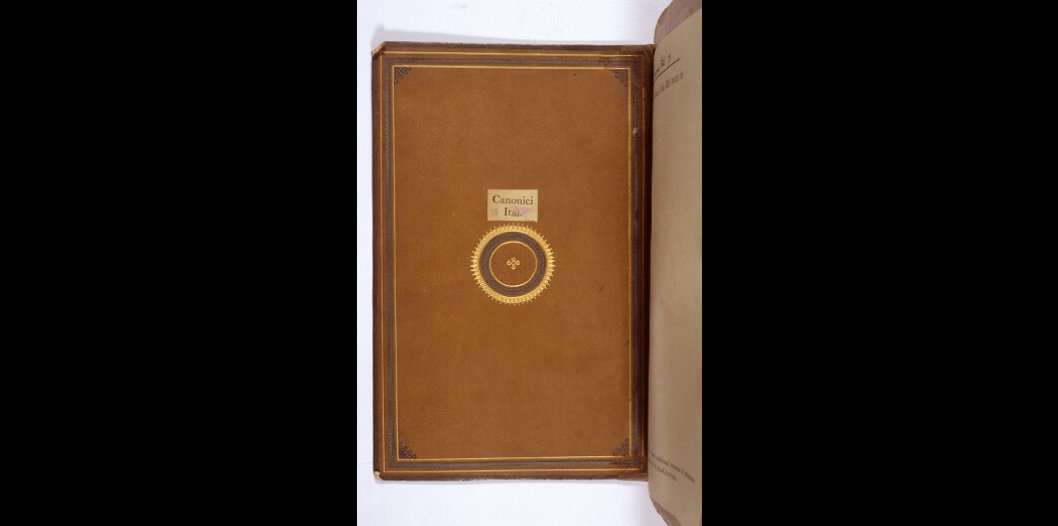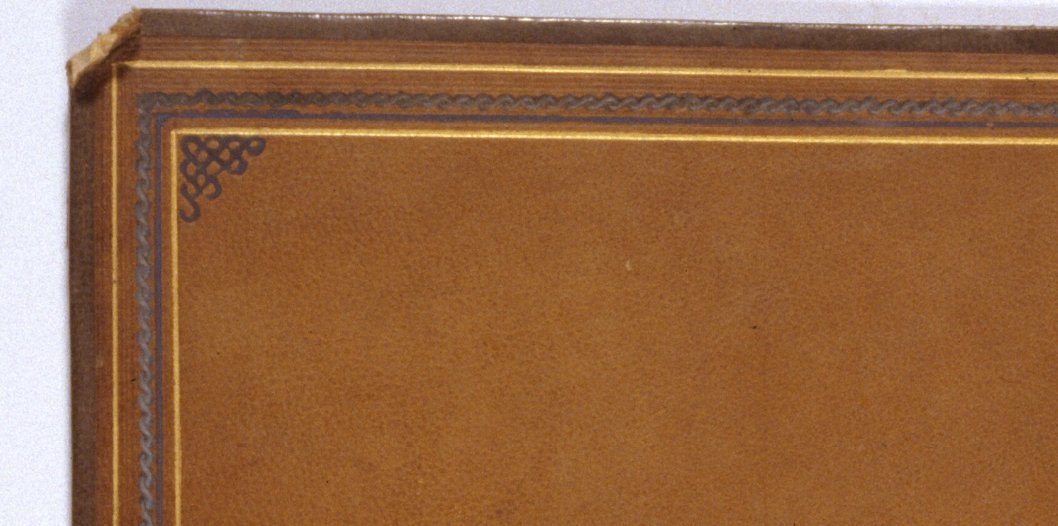Absolutely gorgeous 15th-century binding - not terribly large at ~21 x 13 cm, but, rebacking aside, in splendid condition. Unfair question (doublure not pictured, because it& #39;s a dead giveaway): what language is this manuscript in?
It& #39;s @bodleianlibs MS. Canon. Ital. 78, a Florentine copy of Petrarch& #39;s Canzoniere and Trionfi, dated to the third quarter of the 15th century.
https://medieval.bodleian.ox.ac.uk/catalog/manuscript_2791">https://medieval.bodleian.ox.ac.uk/catalog/m...
https://medieval.bodleian.ox.ac.uk/catalog/manuscript_2791">https://medieval.bodleian.ox.ac.uk/catalog/m...
[Digital version (partial) here, with much better (zoomable) images: https://digital.bodleian.ox.ac.uk/objects/a8a334e7-ffc6-4cdc-88f4-8ffa6dacbd56/]">https://digital.bodleian.ox.ac.uk/objects/a...
You& #39;ll note that the catalogue suggests the manuscript may have been bound in Istanbul by an Ottoman binder, a speculative attribution based on Anthony Hobson& #39;s work.
@AoAlio convincingly argued that the binding was more likely the work of a Mamluk binder in her 2012 thesis "Covering the book: bindings of the Mamluk period, 1250-1516 CE." See pp.508-9:
"A manuscript dated to between 1460-70 of Petrarch’s Canzoniere and Trionfi in
the Bodleian Library is Florentine but may have been bound by a Mamluk binder. It has no flap but the Islamic sewing is still discernible
although it has been rebacked." 1/5
the Bodleian Library is Florentine but may have been bound by a Mamluk binder. It has no flap but the Islamic sewing is still discernible
although it has been rebacked." 1/5
"The cover of this Florentine manuscript can be closely compared to the binding of another manuscript prepared for Sultan Qaytbay in two volumes dated 895/1490 of Dimyati’s Mashāri‘ al-ashwāq ilā maṣ āri‘ al-ushshāq." 2/5
"The medallions are filled with fine arabesques repeated in the cusped corner-pieces which contain wide, cup-like palmettes that appear on
several Mamluk covers. The finely tooled knotwork border can also be compared to Mamluk examples." 3/5
several Mamluk covers. The finely tooled knotwork border can also be compared to Mamluk examples." 3/5
"Hobson has given the cover of the Canzoniere
manuscript an Ottoman attribution and cites two examples of bindings for Mehmed II dated 867/1462-3." 4/5
manuscript an Ottoman attribution and cites two examples of bindings for Mehmed II dated 867/1462-3." 4/5
"Segmented borders had, however, been generally abandoned by Ottoman binders by the middle of the 15th century
suggesting that this manuscript was bound in the Mamluk realm." 5/5
suggesting that this manuscript was bound in the Mamluk realm." 5/5
[If you haven& #39;t read her thesis, which is extensively illustrated and has a v useful appendix, you& #39;ll find it here (you should, if bindings of this period interest you):
https://eprints.soas.ac.uk/16626/ ]">https://eprints.soas.ac.uk/16626/&qu...
https://eprints.soas.ac.uk/16626/ ]">https://eprints.soas.ac.uk/16626/&qu...
Whether you favour identifying this binding as Ottoman or Mamluk, the absence of any provenance in the catalogue earlier than 18th-c Italy leaves the question of this Italian manuscript& #39;s 15th-century circulation tantalisingly unanswered.
[And reminds me just how easily I confuse some 15th-century Mamluk and Ottoman bindings at first sight.]

 Read on Twitter
Read on Twitter








